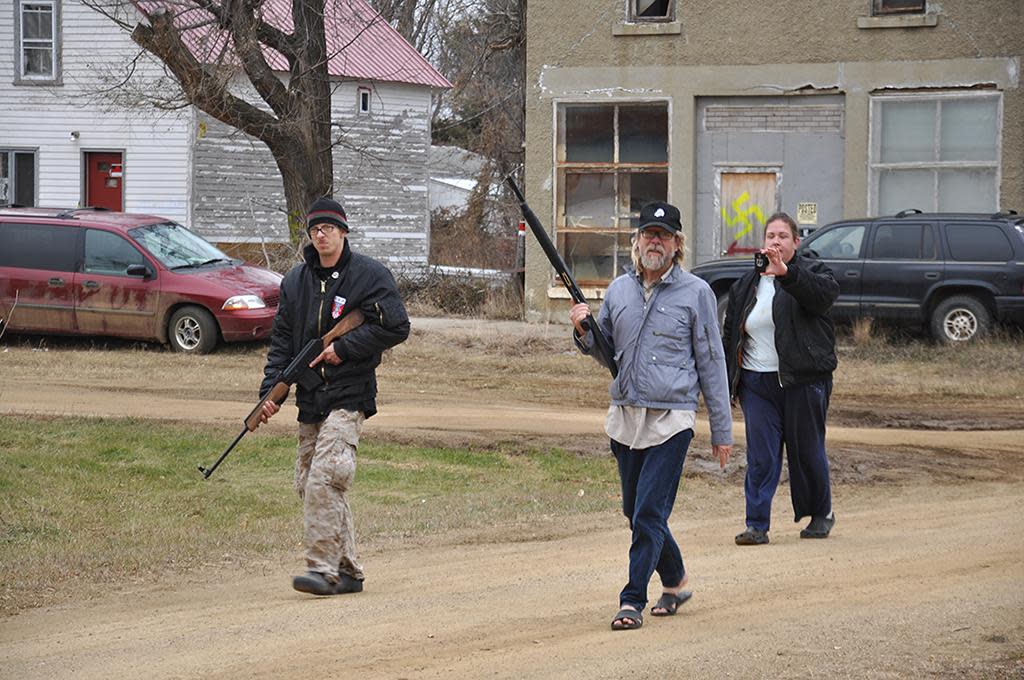Startling Sundance Documentary Shines a Light on a Small-Town Hate Group

When the historical drama Selma hit theaters last month, much of the coverage of the acclaimed film noted that its depiction of the legal abuse endured by African-Americans 50 years ago could not have been more timely. The new Welcome to Leith — which premiered this week at the Sundance Film Festival — can be considered a kind of an inadvertent, bizarro companion piece to Selma, one that shows how the very same constitutional freedoms that Martin Luther King, Jr. and a generation of activists worked hard to preserve can also be used to promote and defend hatred.
Directors Michael Beach Nichols and Christopher K. Walker (2013’s Flex is Kings)probe deep into the tiny town of Leith, North Dakota (population: 23), an area that was put on the map, literally and figuratively, by a few undesirable new residents. At first, few in the town thought much of Craig Cobb when the gangly, wild-haired 61-year-old bought a small plot of land and established residence there in the summer of 2013. When it turned out that he was actually an infamous white supremacist and was calling on his fellow merchants of hate to move to Leith and help establish a homestead for the Aryan movement, the rural hamlet became a battleground.
Welcome to Leith makes use of intimate access to both the terrified residents of Leith and the various white-power leaders that descend upon their town. And though the film ostensibly focuses on just one tiny region, it provides a big-picture look at the twisted logic and sturdy infrastructure of modern hate groups, whose members organize online and flock to defend one another in skirmishes across the country.
Cobb and his cronies are mostly a bitter lot, disaffected and scared of the changes happening in America, which they claim is under attack by minorities. (Cobb says the white race needs to keep its bloodlines “pure” — an argument that becomes a punchline when a DNA test reveals that his ancestry can be traced in part to sub-Saharan Africa). The racist arguments aren’t new or illuminating, but what is striking is the way the group uses the language of civil liberties to try to defend themselves.
The mayor of this small town, meanwhile, is a rancher who inherited the job after two previous mayors died, and at first, seems ill-equipped to handle the influx of new people. Sitting in the audience, you almost want to scream, “Pass some laws against these guys!“ But the neo-Nazis argue that they have the right to peacefully assemble, bear arms, and seek representation in the town council — and, as the movie reveals, they’re not technically wrong, as enraged residents have to sit through presentations by their new, hate-filled neighbors.
As Cobb’s followers insist over and over again, it’s within their constitutional rights to fly their flag and vote in town elections. Such is the dual promise and downside of American democracy, which allows neo-Naziism and the KKK to survive alongside the groups that have fought so hard to extinguish them.
Though the film provides plenty of screen time to both sides of the skirmish, there are clear villains and heroes in Welcome to Leith. Eventually, some clever town ordinances and the extremists’ inability to avoid violent threats tip the scale towards justice. But as the movie makes clear, there are many more Craig Cobbs out there, using the Constitution as a shield, working to undo the civil-rights victories of the past, one tiny town at a time.

